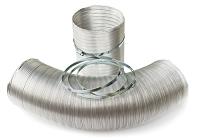
Over time, ducts often develop major leaks, which are hidden from view inside walls and beneath floors. Leakage can also lead to a compromise in home comfort, since leaky ductwork can’t properly supply all rooms with conditioned air.
To restore energy efficiency and comfort to your home here in the Route 495/128 area, it’s wise to seal those ducts. Success in the project depends upon expertise, technique and the type of materials used. So what’s best?
Mastic sealant
You really can’t beat duct mastic for sealing your ductwork, because of its ability to create a tight seal when properly applied -- but the product presents a challenge for newbies, as it's quite messy to work with. Further, mastic doesn’t harden, requiring that you join duct segments with sheet-metal screws before sealing and spreading mastic over joints.
Bigger leaks and spaces between duct sections or adjoining a plenum must be securely joined with mesh tape before applying mastic material. For fiberglass (board) ducts, pre-seal every joint with the fiberglass-mesh tape.
If your home has galvanized steel ducts, mastic can actually be a problem, especially for the non-expert. It’s difficult to use mastic on flexible ducts and around clamps.
Effective tape for ducts
If you're daunted by the prospect of using mastic properly, consider using approved metal-backed tape when sealing your ductwork. Avoid everyday cloth-backed duct tape found at home-improvement stores, which soon dries out as ductwork gets warm or just with the passage of time. Here are the general types available:
- Oriented-polypropylene tape (OPP) looks like packing tape. It’s got a smooth film backing with acrylic adhesive. Underwriters Laboratory-approved tape labeled for high-temperature use should work well to seal the metallic collar to flex ducts.
- Butyl duct tape is more expensive, with its foil backing, and has been known to perform better than OPP.
Tips and exceptions
- Even higher-performing tape must be used on a clean surface.
- Many experts advise against ever using tape in crawl spaces, so you may not be able to avoid mastic entirely on duct-sealing projects.
- Mastic should not be used to seal holes in air handlers/furnaces.
Questions about sealing your ductwork? Contact the experts at Rodenhiser Plumbing, Heating & Air Conditioning, serving the Route 495/128 area of Norfolk MA.
Image via Shutterstock.com